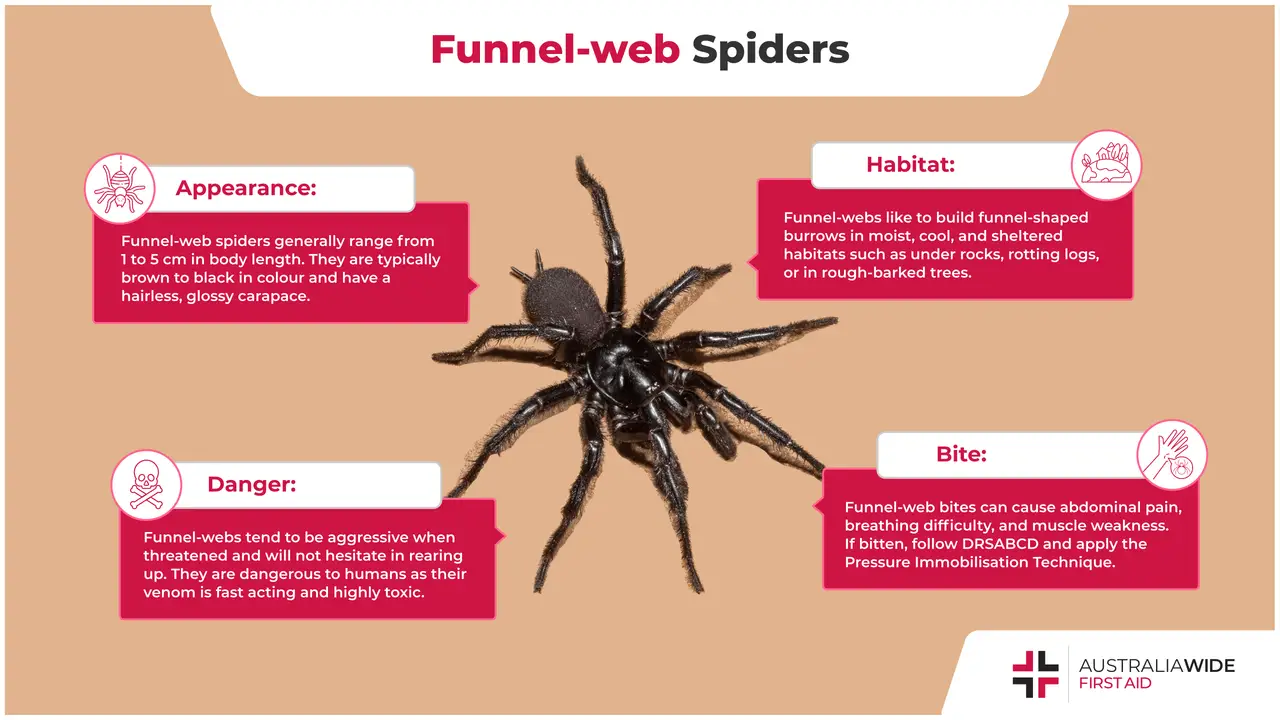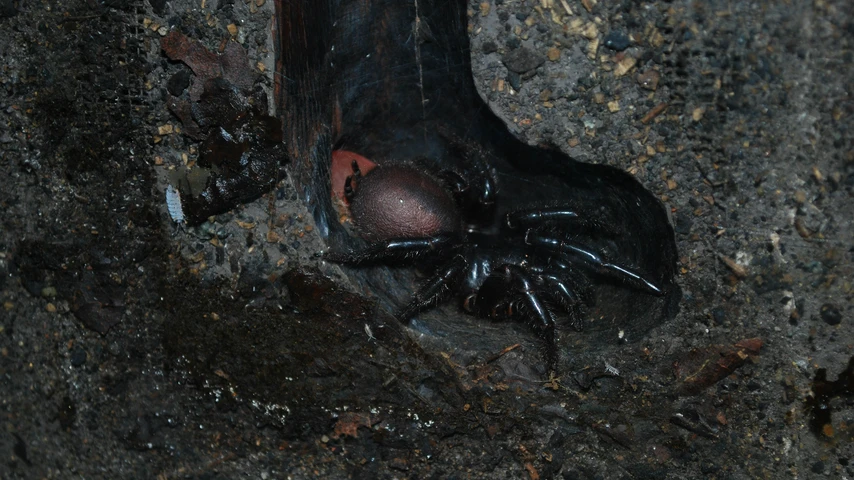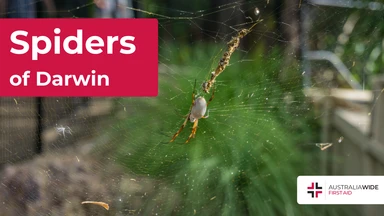The Funnel-web Spider: Australia's Most Dangerous Arachnid


More common in the states along the eastern coast of Australia, Funnel-Web Spiders are one of the deadliest spiders in the world due to their highly toxic and fast-acting venom and are one of the most feared arachnids in the animal kingdom.
Funnel-web spiders can be found all over the world, however, there are three main spider families that are popularly known generally as ‘funnel-web spiders’:
While Agelinidae and Dipluridae spiders are quite harmless and can be found all the way from Central Asia to North America and Africa, their Australian cousins on the other hand are the opposite of harmless.
Hexathelidae, or commonly known as the funnel-web spider, is typically found in the eastern coast of Australia particularly New South Wales, South Australia, Victoria, Tasmania and Queensland. They are ground-dwelling spiders that have adapted to build funnel-shaped webs as burrows or to trap potential prey. These spiders get their name due the shape of their webs having a flat surface and a small funnel-like tube leading to a silken burrow where the spiders wait in anticipation. There are at least 40 species of funnel-web spiders native to Australia but the most venomous are the Sydney Funnel-Web Spider and the Northern Tree Funnel-Web Spider.
These spiders are among the most deadly in the world having been responsible for 13 total deaths and many more medically grave bites. This is mainly due to their highly toxic and fast-acting venom as they are able to kill a full-grown human adult in roughly 15 minutes. However, ever since the development of an antivenom in 1981, there have been zero recorded deaths as of writing. Most other species of funnel-web spiders are not harmful to humans however, it’s better to stay clear of them as they can be difficult to distinguish at first glance.
Being able to identify a funnel-web spider might save your life someday and here are some quick pointers to identify if the spider you’re looking at is indeed the deadly funnel-web kind.
Here are some identifiers that are typical of the funnel-web spider:
As featured in their name, funnel-web spiders hunt by waiting in their makeshift funnel for prey to fall onto the horizontal web before it rushes out, grabs the prey, and takes it back into the funnel to consume. They typically make their burrows in moist, cool, and sheltered habitats such as under rocks, rotting logs, or in rough-barked trees. While you don’t have to worry about these spiders dwelling in your lawn, they are commonly found in suburban rockeries and shrubberies hiding in the shadows.
These spiders are mainly sedentary and spend their entire lives (female spiders can live up to 20 years!) inside the burrow – venturing into the outside world momentarily to lunge at any passing prey. Majority of their prey consists of insects and small vertebrates such as lizards and frogs.

With a total of 13 recorded deaths as of writing, funnel-web spiders can be dangerous to humans due to the highly toxic and quick-acting venom in each bite. However, not all funnel-web spiders are dangerous neither are they specifically out to get us. Research has shown that the development of these highly toxic bites was developed as a defence against predators.
Typically, when male funnel-web spiders are young, their venom is fatal to small insects which they eat. However, once these males begin their search for a female mate, they must leave the safety of their burrows and venture into the unknown. This is when their venom becomes potent enough to cause death in vertebrates such as reptiles, mammals, and even humans.
On the bright side, funnel-web spiders are the most poisonous during the spiders’ summer mating season – when majority of male spiders begin to leave their burrows, needing defences to protect themselves against potential predators.
It’s crucial to act fast as the bite of this spider is fatal. Funnel-web spider bites are extremely painful with a noticeable red bump forming at the bite site. Other symptoms of a funnel-web spider bite include:
Once bitten, it’s important for you to keep this guide in mind:
If the casualty begins exhibiting signs of a severe allergic reaction, otherwise known as anaphylaxis, call Triple Zero (000) for an ambulance, consult the Australian Resuscitation Council's anaphylaxis treatment guideline, and follow DRSABCD and be prepared to perform CPR.
With spring just around the corner, it’s important to stay clear of these eight-legged creatures due to their toxic bites and the threat they pose to us. But if you do happen to stumble upon a funnel-web spider and unfortunately get bitten by one, it’s important to remember first aid procedure during emergencies. By applying these first aid techniques, you’ll be able to save a life in dire times.
If you’re interested in learning the skills and knowledge to provide first aid response and life support, check out our First Aid Course that will allow you to manage casualties, incidents and other first aiders until qualified emergency help arrives at the scene.
We also have articles on what to do if you get stung or bitten by a snake, fire ant, and different types of marine life.
And for more details on how to identify and treat bites from some of Australia's deadliest spiders, including White tail spiders, Wolf spiders, Huntsman spiders, and Redback spiders, head to our Resource Library.
Disclaimer: This article is for informational purposes only. It does not constitute, replace, or qualify as any form of first aid training.

March 11, 2025
Darwin, the tropical capital of Australia’s Northern Territory, is home to a rich diversity of wildlife - including an impressive array of spiders. From the sprawling webs of golden orb-weavers to the cryptic camouflage of trapdoor spiders, these arachnids play a vital role in the local ecosystem. While some may inspire fear, the majority are harmless and even beneficial, helping to control insect populations.

September 4, 2024
Cat bites, while often underestimated, can lead to serious health complications if not treated promptly and properly. Cats' mouths harbour a variety of bacteria that can cause infections in humans.

April 1, 2024
Encounters with wildlife can often be thrilling, but when it comes to the creature known as the drop bear, the experience can quickly turn dangerous. A sharp increase in recent attacks prompts the need for understanding proper first aid procedures in case of an attack.